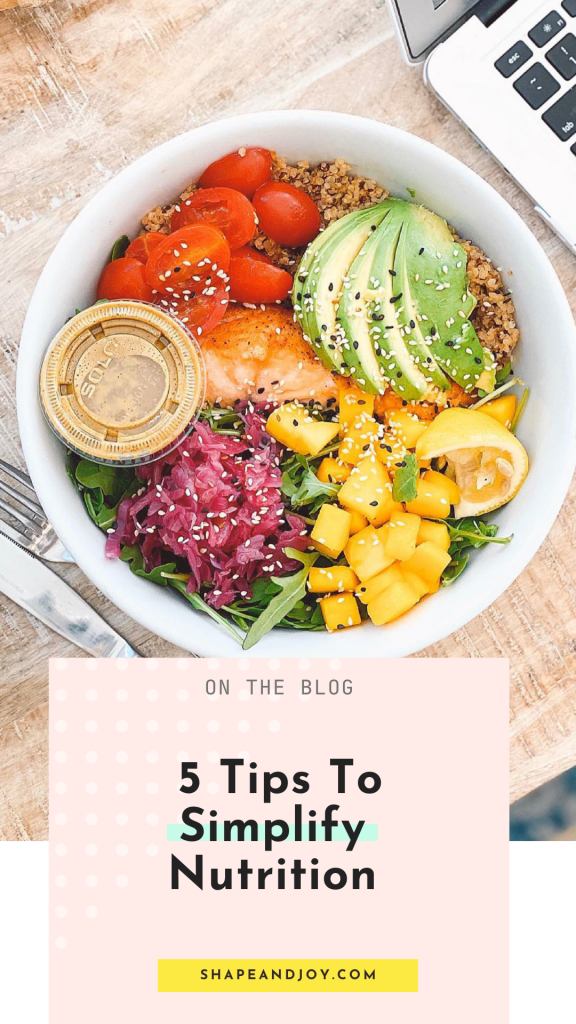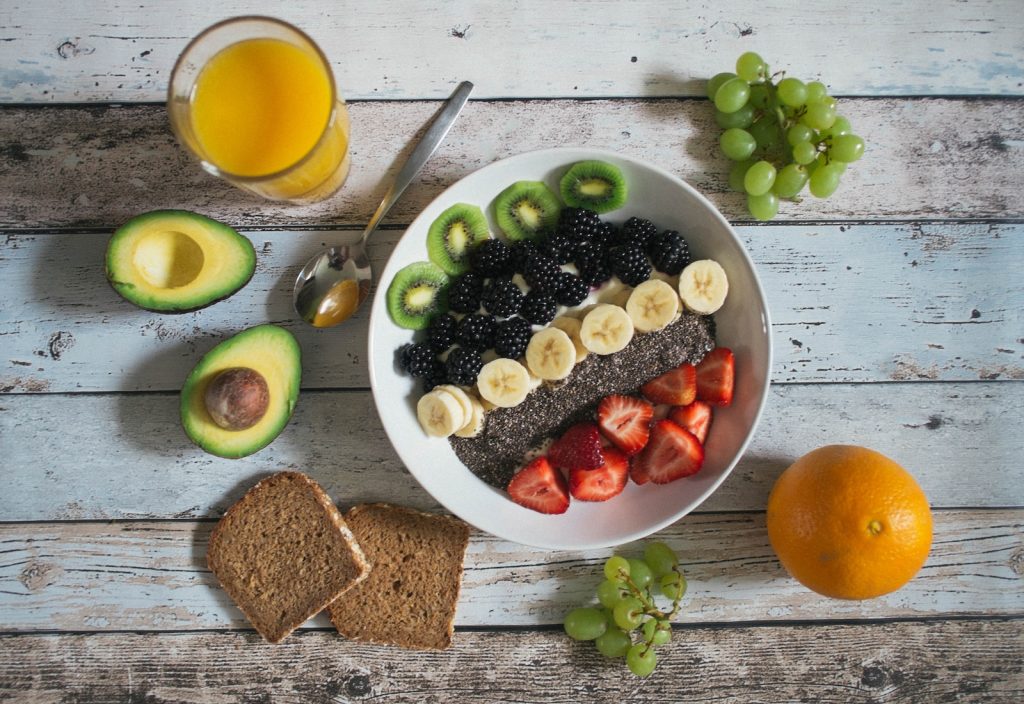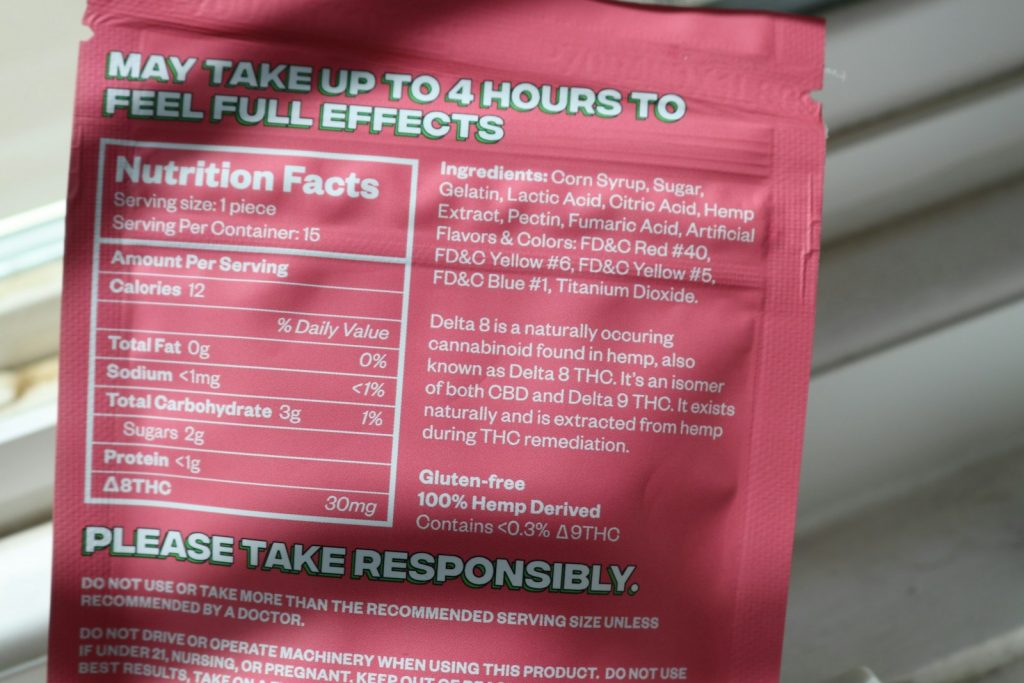Meal Planning by Macros: Your Ultimate Guide!
Meal planning can feel like a game of nutritional Tetris. You’re juggling proteins, carbs, and fats like some kind of dietary circus act, all while trying to resist the siren call of that leftover slice of pizza in the fridge. And if you’re also meal planning by macros? Well, that adds another level of complexity.
Suddenly, every bite counts, and you’re left wondering if that spoonful of peanut butter just tipped the scales. But before you throw in the towel, let’s break it down into simple steps that will have you mastering your macros and meal planning like a pro. Because, trust me, it doesn’t have to be that hard!
I promise it’s not as scary as it sounds. And no, you don’t need a PhD in nutrition to nail it. Just a little know-how and some practical tips. Let’s get into it!
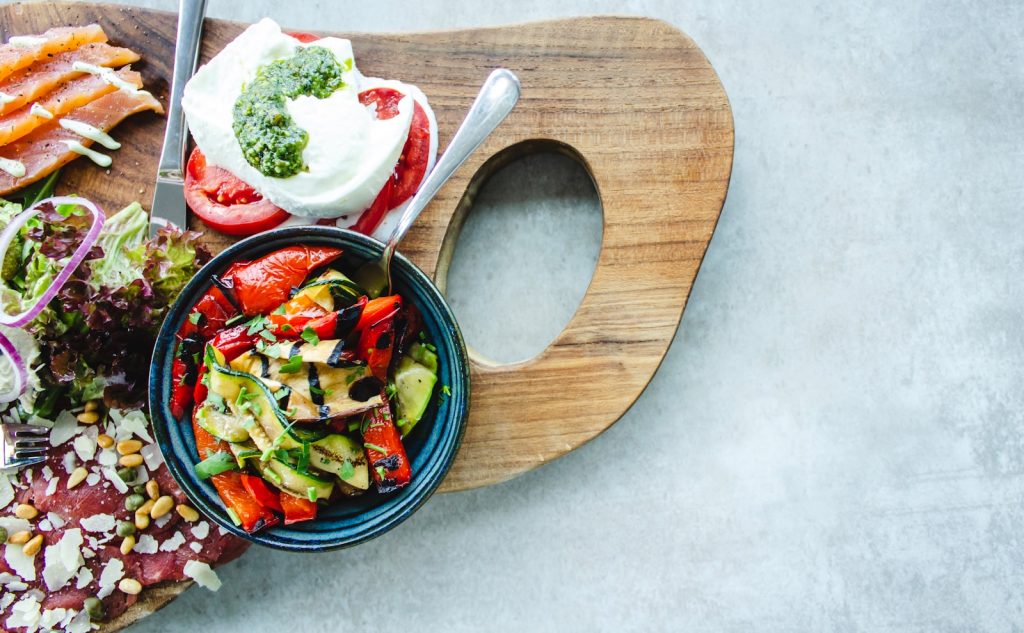
What Are Macros Anyway?
Alright, before we get all fancy with our meal planning, let’s break down what macros even are.
Honestly, before I started my weight loss journey in 2020, I had no clue what macros were, let alone why they were important. I’d tried every diet under the sun—low-carb, juice cleanses, you name it.
But none of those attempts took proper nutrition into account. I was just blindly following trends, cutting out foods, and hoping for the best. Spoiler alert: it never worked.
It wasn’t until I started learning about nutrition that things finally clicked. Understanding what my body actually needed was a total game-changer. It’s like discovering the secret recipe to a dish that had always turned out bland—suddenly, everything made sense!
Macros (short for macronutrients) are the three big players in your diet—the essential building blocks that your body needs in larger amounts to function properly.
Think of them as the power trio behind everything you do, from hitting the gym to simply getting through a busy workday.

Protein: The Muscle-Builder
Protein is the star of the show when it comes to building and repairing tissues, especially muscle. But it’s not just for bodybuilders—everyone needs protein.
It helps keep you full, supports your immune system, and plays a role in producing hormones and enzymes.
Carbohydrates: Your Body’s Favourite Energy Source
If protein is the builder, carbs are the fuel. Carbohydrates are your body’s go-to source of energy, powering everything from your brain to your muscles.
When you eat foods like pasta, bread, fruits, and veggies, your body breaks down the carbs into glucose (a type of sugar), which is then used to keep you going throughout the day.
And here’s the best part: carbs come in many forms, from the quick energy hit of a banana to the slow-burning satisfaction of whole grains.
They’re essential, not just for athletes but for anyone who needs the energy to tackle daily tasks.
Fats: The Flavour Enhancers
Fats often get a bad rap, but they’re absolutely essential. Not only do they make food taste amazing (hello, avocado & egg bagel!), but they also support cell growth, protect your organs, and help your body absorb crucial vitamins like A, D, E, and K.
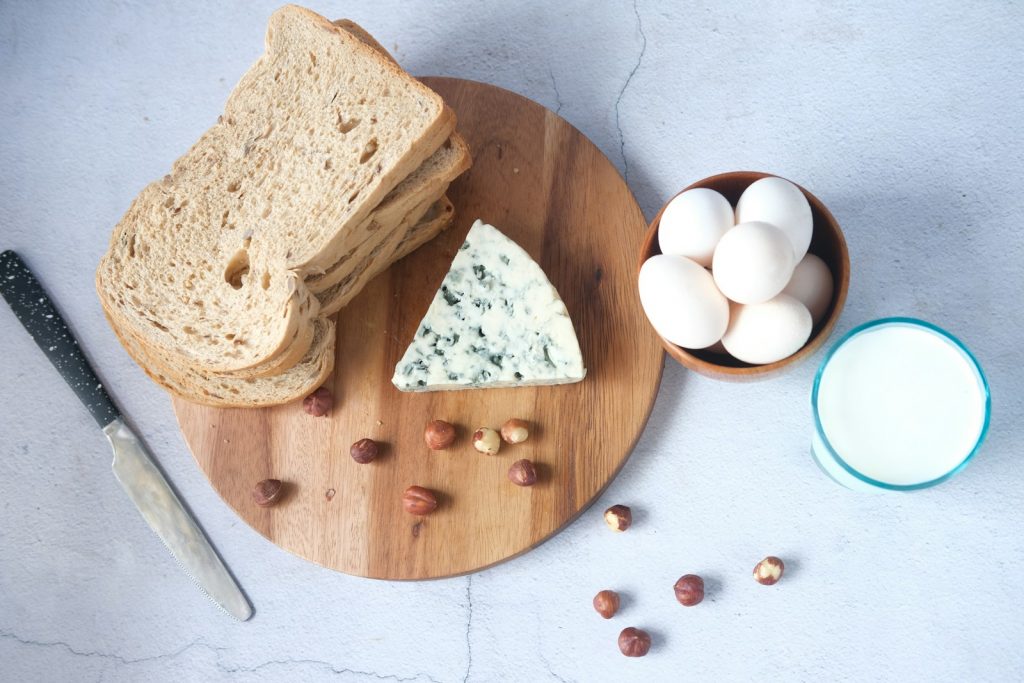
Think of fats as the flavour enhancers and protectors in your diet. Healthy fats like those found in olive oil, nuts, seeds, and fatty fish are your friends, helping to keep your heart healthy and your skin glowing.
Just a drizzle of olive oil over your salad or a spoonful of peanut butter in your smoothie can go a long way in keeping you satisfied and healthy.
Each macro plays a unique role in keeping your body running smoothly, so getting the right balance is key to hitting your health and fitness goals.
Understanding Calories in Macros
These three macronutrients—protein, carbohydrates, and fats—are what make up your total daily calorie intake.
So, when you hear people talk about “counting macros,” they’re really just talking about divvying up their calories between these three categories.
So before we dive deeper into meal planning by macros, it’s important to understand how each macronutrient contributes to your daily calorie intake.
Knowing this will help you better manage your diet and ensure you’re hitting your nutritional goals.
Breakdown
- Protein: Each gram of protein contains 4 calories.
- Carbohydrates: Just like protein, each gram of carbohydrates also contains 4 calories.
- Fats: Fats are more calorie-dense, with each gram containing 9 calories.
Let’s put this into perspective with an example:
Imagine you’re following a diet plan that’s set at 2,000 calories per day. You’ve decided on a macro split that looks like this:
- Protein: 25% of your daily calories
- Carbohydrates: 50% of your daily calories
- Fats: 25% of your daily calories

Here’s how it would break down:
- Protein:
- 25% of 2,000 calories = 500 calories from protein
- Since protein has 4 calories per gram, you would aim to eat 125 grams of protein per day (500 ÷ 4 = 125).
- Carbohydrates:
- 50% of 2,000 calories = 1,000 calories from carbohydrates
- With 4 calories per gram, you would aim for 250 grams of carbs per day (1,000 ÷ 4 = 250).
- Fats:
- 25% of 2,000 calories = 500 calories from fats
- Given that fats have 9 calories per gram, you would aim for about 56 grams of fat per day (500 ÷ 9 ≈ 56).
Check out more posts on Nutrition:
- How to Create SMART Nutrition Goals and Stick to Them
- Science-Based Nutrition: 5 Tips To Lose Weight The Healthy Way
- Simplify Nutrition With These 5 Easy Tips
Why Plan Meals by Macros?
When meal planning by macros, you’re ensuring that your body gets exactly what it needs to thrive—not just survive.
Whether you’re aiming to build muscle, lose fat, or simply maintain a healthy lifestyle, understanding and managing your macros is like having a secret weapon in your nutritional arsenal.
You might be thinking, “Can’t I just eat healthy and call it a day?” Sure, you could. But meal planning by macros can help you reach your goals faster. Here’s why:
Personalised Nutrition: Different bodies have different needs. By focusing on macros, you can tailor your diet to your goals—whether it’s building muscle, losing fat without losing muscle, or just maintaining your current weight.
Balanced Diet: Ensures you’re getting a good mix of nutrients. No more surviving on salads and calling it a day.
Flexibility: Love pizza? You can fit it into your macros. Craving chocolate? There’s room for that too. It’s all about balance!
How to Calculate Your Macros
Here’s how you figure out your macros:
Set Your Calorie Goal: Use an online calculator or consult with a nutritionist to find out how many calories you need based on your goals.
My FREE Nutrition for Weight Loss eBook also gives step-by-step instructions on calculating this yourself.

Determine Your Macro Split: This varies depending on your goals:
- Protein: 10-35% of your daily calories
- Carbs: 45-65% of your daily calories
- Fats: 20-35% of your daily calories
(Psst… You can use a macro calculator online to make this super easy.)
Planning Your Meals
Okay, now that you know your macros, let’s talk about the erm… fun(?) part—planning those meals. Meal planning might seem daunting at first, but with a little practice, it becomes second nature.
The key is to focus on balance and variety while ensuring you hit your macro targets. Here’s how you can do it:
Pick Your Protein First: The MVP of Your Meal
Protein is the foundation of every meal and for a good reason. So, when you start planning your meals, make protein your first priority.
Breakfast: Think eggs, Greek yoghurt, or a protein smoothie.
Lunch: Opt for lean meats like chicken breast, or turkey, or plant-based options like tofu or tempeh.
Dinner: Any lean meat or fish such as salmon or cod are great choices, or you could go for a hearty portion of beans or lentils.
The idea is to ensure that each meal contains a significant source of protein, as this will help you meet your daily protein goals without feeling like you’re constantly playing catch-up.
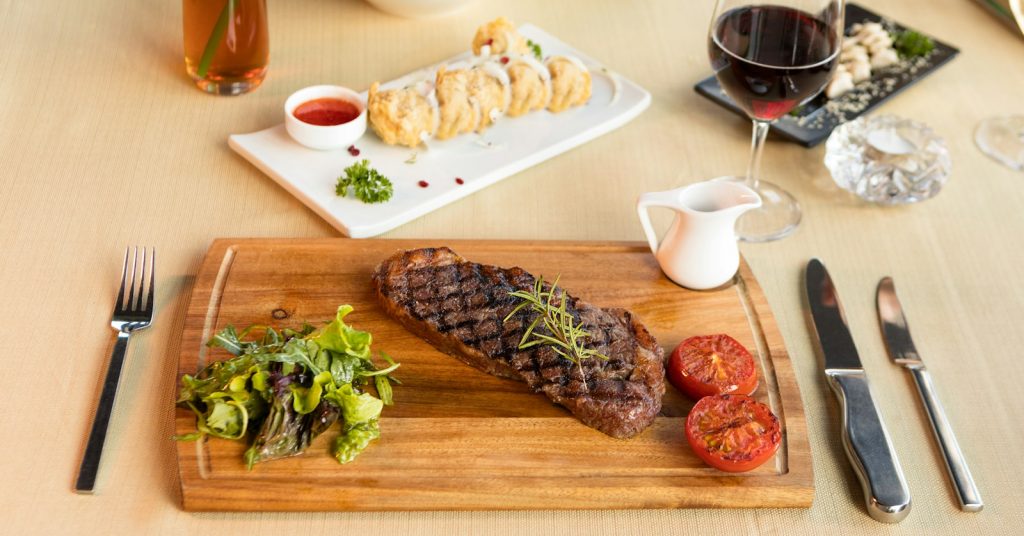
Add Your Carbs: The Energy Boosters
Once you’ve nailed down your protein, it’s time to add in your carbs.
Whole Grains: Think brown rice, quinoa, oats, or whole wheat pasta. These provide a steady release of energy and are packed with fibre.
Fruits: Add a piece of fruit to your meal or snack—bananas, berries, and apples are all nutrient-dense options.
Vegetables: Veggies are not only low in calories but also loaded with vitamins, minerals, and fibre. Think sweet potatoes, leafy greens, or bell peppers.
Bread & Cereals: If you’ve been avoiding bread, there’s no need—just choose wholegrain where you can and keep portions in check.
Although not all carbs are created equal and I do like to put a focus on whole grains, you don’t have to completely avoid simple carbs, like white bread. The key is moderation and balance.
Simple carbs, such as white bread, pasta, or even that occasional sweet treat, can absolutely fit into a healthy diet. We don’t do restrictive here!
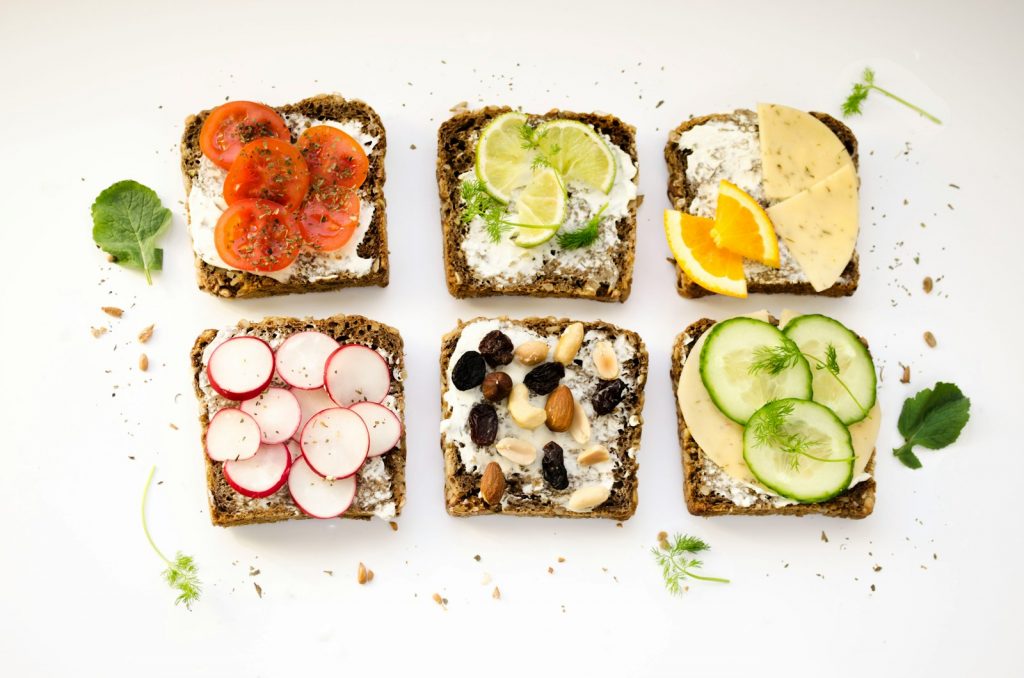
Don’t Forget the Fats: The Flavor and Satiety Heroes
Fats often get sidelined, but they’re essential for a balanced diet. They help your body absorb fat-soluble vitamins, support brain health, and make your meals taste amazing.
Plus, fats are crucial for keeping you feeling satisfied after a meal.
Healthy Oils: Drizzle olive oil over your salad or use it for cooking to add a dose of healthy monounsaturated fats.
Nuts and Seeds: Sprinkle some almonds, chia seeds, or sunflower seeds on your yoghurt, porridge, or salad for a crunchy, nutritious boost.
Avocado: Spread it on toast, slice it into your salad, or blend it into a smoothie for a creamy texture and healthy fats.
Fatty Fish: Salmon, mackerel, and sardines are rich in omega-3 fatty acids, which are great for heart health.
The key to fats is moderation. Because they’re more calorie-dense (9 calories per gram), a little goes a long way. But don’t skip them—fats are vital for both flavour and fullness.

Measure & Track: The Key to Consistency
If you’re serious about hitting your macros, measuring and tracking your food is going to have to become your new bestie.
I know it sounds tedious, but it’s the best way to ensure you’re staying on track and making progress toward your goals.
Use a Food Scale: This is your best friend when it comes to accuracy. Weighing your food ensures you’re getting the right portion sizes and not accidentally over- or under-eating.
Track with Apps: Apps like MyFitnessPal, Cronometer, or Macrofactor can make tracking your macros a breeze.
Simply log what you eat, and the app will do the math for you, showing how close you are to your daily macro targets.
Be Consistent: The more consistent you are with measuring and tracking, the better you’ll get at eyeballing portions and understanding your dietary needs.
Tracking might feel like a chore at first, but it quickly becomes a habit. Check out my post ‘Consistency Over Motivation: 5 Ways to Stay on Track‘ for more tips on staying consistent with this!
Tips For Making Meal Planning by Macros Work for You
Let’s face it, sticking to a meal plan can really feel like a chore—especially when life gets busy, or if you’re like me and have ADHD. (Check out a couple of my posts on ADHD if this is something you struggle with – How to Increase Dopamine With ADHD To Lose Weight & ADHD Morning Routines: Kickstart Your Day with Energy
For me, the key to success is making everything as easy and simple as possible.
I know that if something feels too complicated or time-consuming, I’m way more likely to lose focus and abandon it altogether.
But with a few smart strategies, you can make meal planning by macros a seamless part of your routine. Here’s how to make it easier and more sustainable:
Meal Prep: Your Secret Weapon for Success
Meal prep is a game-changer when it comes to sticking to your macro goals.
By taking a few hours each week to prepare your meals, you can save time, reduce stress, and avoid the temptation of reaching for less healthy options when hunger strikes.
Put a meal prep session in your calendar, pop on your headphones and get it out of the way!
How to Get Started with Simple Meal Prep
Batch Cook Your Protein: I’ve found that cooking a big batch of protein at the start of the week is a lifesaver.
Whether it’s grilling chicken breasts, baking tofu, or cooking up a pot of beans, having your protein ready to go means you can quickly assemble meals without having to start from scratch every time.
Chop Your Veggies: Pre-chopping veggies is another ADHD-friendly hack that I rely on.
If I know my veggies are already washed, chopped, and ready to use, I’m much more likely to eat them.
Store them in airtight containers so they’re easy to grab for salads, stir-fries, or snacks.
Pre-Portion Your Snacks: When I’m in the zone working on something, the last thing I want is to interrupt my flow to figure out a snack so I usually grab whatever is the most convenient (which usually comes in a crisp packet).
Pre-portioned snacks like nuts, yoghurt, or fruit make it easy to grab something that fits my macros without breaking my concentration.
Cook Once, Eat Twice (or More!): I’m all about efficiency, so I double or triple recipes whenever possible.
This way, I’ve got leftovers for lunches or quick dinners, and I don’t have to think about what to cook every single day.
Meal prep might take a little time upfront, but for someone like me, it pays off big time throughout the week.
Plus, there’s something so satisfying about opening the fridge and seeing a lineup of ready-to-go, macro-friendly meals. Check out my post ‘Principles of Meal Planning: An Easy Step-by-Step Guide‘ for more tips on meal planning!

Keep It Simple: You Don’t Need to Be a Gourmet Chef
When it comes to meal planning, simplicity is your best friend—especially if you’re like me and need things to be straightforward.
You don’t need to create elaborate dishes or follow complicated recipes to eat well and hit your macros.
Stick to Basic Recipes: I focus on a handful of go-to meals that are easy to prepare and that I genuinely enjoy eating.
Things like grilled chicken with air-fried veggies, an easy stir-fry, or some chicken wraps are my go-to.
Use Versatile Ingredients: Choosing ingredients that can be used in multiple dishes throughout the week is a huge time-saver.
For example, one of my favourite meals is these leftover chicken tacos. We have these the day after a roast and they’re always a hit.
Embrace One-Pan or One-Pot Meals: These are lifesavers when you’re short on time or focus.
Sheet pan dinners, where you cook your protein and veggies all together, or one-pot stews are my go-to because they require minimal clean-up and keep things simple. I love the Rukmini’s Roasting Tin series!
Don’t Overcomplicate It: Remember, you don’t need to reinvent the wheel every time you cook.
Sometimes, the simplest meals—like scrambled eggs with spinach or a smoothie with protein powder, banana, and almond butter—are the most satisfying.
By keeping my meals simple, I find it easier to stick to my plan without feeling overwhelmed. Plus, it frees up mental space for more important things—like being a new mum!

Stay Flexible: Consistency Over Perfection
Life is unpredictable, and even the best-laid meal plans can go awry—especially when ADHD throws you a curveball. The key to long-term success is flexibility.
Don’t beat yourself up if you go over your carbs one day or miss your protein target another. It’s about consistency over time, not perfection in the moment.
Give Yourself Grace: I’ve learned that it’s important to give myself grace. If I have a day where I indulge a little more or don’t quite hit my macros, that’s okay.
What matters is getting back on track with my next meal and not letting one off day derail my progress.
Make Adjustments as Needed: If I find that my plan isn’t working for me—maybe it’s too restrictive or I’m not enjoying the foods I’ve chosen—I tweak it. Your meal plan should work for you, not the other way around.
Plan for the Unplanned: I keep a few go-to meals or snacks on hand for those days when things don’t go as planned. A stash of protein bars, healthy frozen meals, or a list of macro-friendly takeout options can help me stay on track without stressing out.
Remember the Bigger Picture: One off day won’t derail your progress. It’s your overall habits that make the difference. I focus on being consistent most of the time, and that’s what leads to results.
By staying flexible and not stressing over the small stuff, I’ve found that I’m much more likely to stick with my plan in the long run. Check out my post ‘The Importance of Consistency: Small Habits Lead to Big Results!‘ for more help on staying consistent!

Common Mistakes to Avoid
Before you go, let’s talk about a few common pitfalls that can trip you up on your journey to mastering meal planning by macros.
Awareness is half the battle, so let’s make sure you’re set up for success by avoiding these mistakes:
Not Eating Enough Protein
Seriously, protein is the key to feeling full, maintaining muscle, and supporting overall health.
It’s easy to underestimate how much protein your body actually needs, especially if you’re focused on cutting calories or following a plant-based diet.
But skimping on protein can lead to muscle loss, increased hunger, and less-than-optimal results from your workouts.
Obsessing Over Macros
While tracking and meal planning by macros is a powerful tool for reaching your health and fitness goals, it’s important to remember that food is fuel, not the enemy.
It’s easy to get caught up in the numbers—constantly worrying about hitting your exact macro targets or feeling guilty if you go slightly over or under.
Why It Matters: Obsessing over macros can lead to an unhealthy relationship with food, turning what should be a positive, empowering practice into a source of stress. This kind of all-or-nothing thinking can make it harder to stick to your plan in the long run.
How to Fix It: Use macros as a guide, not a strict rulebook. Focus on being consistent over time rather than perfect every day.
It’s okay to enjoy a meal without tracking it or having a few more biscuits—even if it doesn’t fit perfectly into your macro goals.
The key is balance and flexibility, not perfection.

Ignoring Micronutrients
While macros are important, they’re only part of the nutrition puzzle. Micronutrients—vitamins and minerals—are equally essential for your overall health.
It’s easy to focus so much on hitting your protein, carb, and fat goals that you forget about the importance of eating a variety of nutrient-rich foods.
Why It Matters: Micronutrients are essential for everything from immune function to bone health and energy production.
Without them, you might meet your macro goals but still feel sluggish, run-down, or experience other health issues.
How to Fix It: Eat a rainbow of colourful foods to cover your micronutrient bases. Incorporate plenty of fruits, vegetables, nuts, seeds, and whole grains into your diet.
Consider adding a multivitamin or specific supplements if you have gaps in your diet, but remember—real, whole foods should be your primary source of nutrition.
Remember, the goal is to nourish your body in a way that supports your health and happiness—not to get bogged down by numbers or overly restrictive rules.
Keep it balanced, keep it flexible, and most importantly, keep it enjoyable!
Wrapping It Up
Meal planning by macros might seem a bit overwhelming at first, but once you get the hang of it, it’s a total game-changer. You’ll have more control over your nutrition, feel more energised, and still get to enjoy your favourite foods—all while smashing your goals.
You’ve got this. ????



